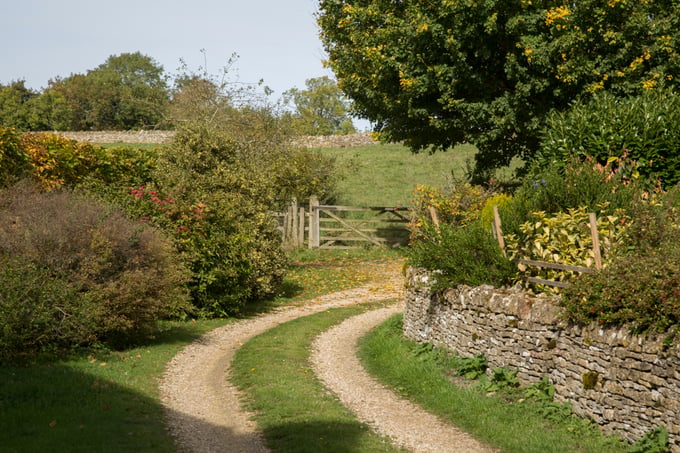Can a Bridging Loan Affect a Mortgage Application?
Learn how a bridging loan affects mortgage applications, key lender considerations, and tips to boost your approval chances.
 Borrower Tips
Borrower Tips
We know from our recent white paper research that 96% of developers are not confident in how to achieve BNG. But with the requirements that came into play in February 2024, it’s essential to understand what is expected of developers. Read our quick guide to understand the basics.
Biodiversity Net Gain (BNG) is a way of ensuring that any development and/or land management doesn’t have an adverse effect on the natural environment. The aim of biodiversity net gain is to leave the natural environment and biodiversity in a measurably better state than it was before the development.
Developers have to deliver a BNG of 10%, meaning every new development will increase or improve the quality of the natural habitat by 10% in comparison to what was there before.
Yes. In England, BNG became mandatory on 12th February 2024, under The Environment Act 2021.
The Government initially consulted on biodiversity net gain assessment in 2018, where a two-year implementation period for mandatory BNG was agreed after the Environment Act came into force in 2021.
It applies to all new developments, less exemptions (see details below). For small sites (defined below), there was an extended transition period to meet biodiversity net gain requirements, but since 2nd April 2024, the new legislation has applied. This delay was to lessen initial burdens and allow a longer period for developers and local planning authorities to adapt and prepare for the high volume of minor applications.
Implementation for Nationally Significant Infrastructure Projects is planned for November 2025.
All of the following need to know the rules:
Small sites are defined as:
The BNG provisions are only applicable in England; Scotland has yet to determine what measurable target to set for BNG, with CIEEM publishing a briefing note on the issue. Likewise, in Wales and Northern Ireland, there is no set metric for BNG - it works on a voluntary basis, emphasising the need for proactive consideration of the environment. The Welsh briefing note details how they plan to achieve this.
Some developments are exempt from biodiversity net gain requirements. These include:

No. The BNG requirements only apply to applications submitted after the legislation took effect in February. This also includes any applications made under Section 73 where earlier permission was granted prior to 12th of February.
BNG information will need to be provided at the application stage to support an LPA to determine whether or not the BNG objective will be met. Whilst LPAs will assess BNG after planning permission is granted through the mandatory conditions, they will still need clarity on a development’s proposed BNG position prior to granting permission in order to lay-out any necessary planning conditions and obligations to secure it.
Biodiversity units can be lost through development or generated through work to create and enhance habitats.
The ecological impacts of developments have previously been assessed as part of the planning process, with a degree of measurement of the areas of habitat lost or gained. But these measurements don’t fully consider key aspects such as habitat quality or connectivity. BNG is different because it defines a transparent measurement of the likely ecological outcomes from proposed developments.
For the purposes of BNG, biodiversity is measured in standardised ‘biodiversity units’ which are used to measure biodiversity value. There are three types of biodiversity units:
A habitat will contain a number of biodiversity units, depending on things like its:
Each is calculated in separate ‘modules’ of The Biodiversity Metric.
The Biodiversity Metric
The Department for Food, Environment and Rural Affairs (DEFRA) have outlined a habitat based approach to determining a proxy biodiversity value, developed by Natural England. The Biodiversity Metric is designed to provide ecologists, developers, planners and other interested parties with a means of assessing changes in biodiversity value (losses or gains) brought about by development or changes in land management.
Mandatory BNG requires the use of the latest version of the Biodiversity Metric (version 4.0, published March 2023), an essential biodiversity net gain calculator for developers. No other metric is accepted.
The statutory Biodiversity Metric is used to measure:
The statutory tool must be used to prove you have accurately calculated the number of biodiversity units for existing habitat, or habitat enhancements to achieve BNG.
The government has provided guidance on its use.
Irreplaceable Habitats:
There are certain types of habitats that the regulations deem ‘irreplaceable’. This includes ancient trees and woodland, saltmarsh, blanket bog, lowland fens, limestone pavements and coastal sand dunes. For these habitats, alternative arrangements must be made to minimise any negative impacts from development.
Through site selection and layout, developers should seek to avoid or reduce any negative impact on biodiversity and improve the existing biodiversity by 10%.
There are three ways a developer can achieve this 10% biodiversity net gain:
All three options can be combined, but they must be followed in this order. Following the steps in this order is known as ‘the mitigation hierarchy’ and is considered a key element of achieving BNG.
| Avoid biodiversity loss | Minimise biodiversity loss | Compensation on site | Compensation off site |
⇒ ⇒ ⇒
It’s important to be aware that any false or misleading information submitted for biodiversity net gain planning can lead to fines imposed by Natural England.

We know from the research we carried out for our white paper Solving the UK’s Housing Shortage, that in 2023 96% of developers were not confident in how to actually achieve BNG. As the new regulations came into force, there are more habitat banks, in conjunction with Natural England offering help and advice as well as off-site solutions, so it’s worthwhile talking to someone who understands the processes involved.
BNG is of course an extra consideration and cost for developers. Before you commit to a site, take time to consider your biodiversity net gain requirements, and above all, ensure your figures still stack up for your project. A 2 minute search on Brickflow will give you live borrowing costs and instantly determine whether or not your project is viable.
For further details on BNG, visit the Government’s website, where you can also find the Environment Act 2021 in full and the essential Biodiversity Metric.
Learn how a bridging loan affects mortgage applications, key lender considerations, and tips to boost your approval chances.
Discover how bridging loans can help you buy a house. Learn about scenarios, benefits, and key considerations.
Learn how bridging loan deposits work, why they’re required, and how to optimise your deposit to secure the best loan terms.